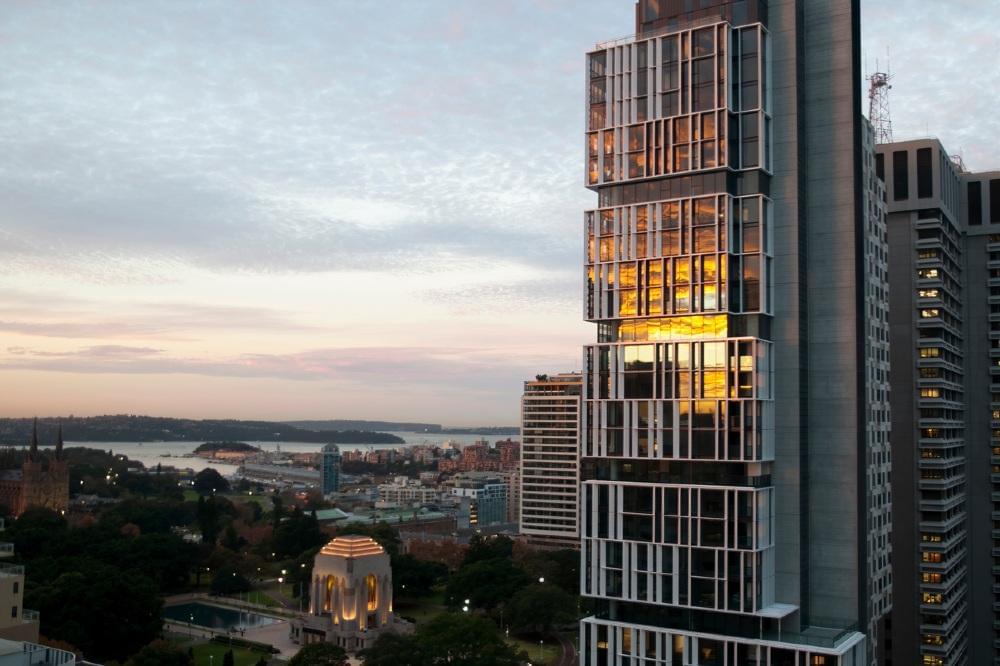Australian property market update - February 2020
2020 is already looking like a year of momentous events, given that only a month ago we were still digesting the impact of this summer's catastrophic bushfires.
As we look back at our monthly property market update for February we still don't know what the impact of coronavirus will be for the broader economy and the housing market. The Reserve Bank of Australia (RBA) has already cut the cash rate to a historic low of 0.50% based on the disease's global spread.
Some analysts believe unemployment could rise if the Chinese economy slows significantly, with the local tourism sector the primary casualty. Another view is that people will turn to bricks and mortar as a safe haven from share markets that are currently in freefall.
In the meantime we can look back at how national property values performed over the past month and identify the strongest and weakest housing conditions in our capital cities and regional markets.
National property values: February 2020

Houses
$561,694
Monthly change: +1.1%
Units
$518,845
Monthly change: +1.0%
According to CoreLogic data, national property values rose by +1.1% over February, with Sydney (+1.7%) and Melbourne (+1.2%) leading the way. Both locations have posted nine months of growth, with values up +13.1% and +12.6% respectively since turning the corner in June last year.
The strongest gains have been recorded in upper quartile properties, with Melbourne's top homes up 14.2% over the YTD, compared to +7.6% growth for the lower quartile.
Contrast this with January where the national home value index was a little muted (+0.9%), though this was likely due to the festive season shutdown.
"February saw values in five of Australia's eight capital cities reach record highs, largely driven by low mortgage rates and easier access to credit."
Overall the February data takes the market up +3.0% for the quarter, with every capital city in the black except for Darwin. February saw values in five of Australia's eight capital cities reach record highs, largely driven by low mortgage rates and easier access to credit.
If the current trend continues, the national index is likely to follow suit in the months to come. Notably Perth's recovery continues, even though it has a long way to go to reach its peak.
Regional markets continue to lag their urban counterparts, though lifestyle destinations and areas within striking distance of capital cities are still recording positive growth.
Latest property news: Sydney and regional NSW
Houses
$1,001,357
Monthly change: +1.8%
Units
$763,962
Monthly change: +1.5%
Dwelling values in Sydney are up +1.7% for the month, and +4.6% for the quarter. This makes the city the best performing capital for the three months to February - bringing growth to +10.9% for the YTD.
Median house prices in Sydney have broken through the million dollar mark, up +1.8% for the month. The Hawkesbury and Baulkham Hills lead the way up +16.4% for the quarter, with the Inner West (+16.1%) snapping at their heels, while Ryde is up 15.9% and both the Northern Beaches and City are also active, up +12.8 for the same timeframe.
If you are looking at regional property growth hotspots then Newcastle and Lake Macquarie are the pick in NSW, up +3.7%.
Read more:
- Best suburbs to invest in Sydney 2020
- Best regional NSW areas for property investment 2020
- Best suburbs to invest in Newcastle and the Central Coast 2020
- Sydney metro sparks property boom in the Hills District
Latest property news: Melbourne and regional VIC
Houses
$809,719
Monthly change: +1.3%
Units
$583,294
Monthly change: +1.0%
Melbourne is only lagging slightly, up +1.2% for the month, +3.9% for the quarter and +10.7% YTD. The market in the Victorian capital is still affordable relative to Sydney, with the median house and unit prices some $200k cheaper.
The city's Inner East was however the top performing metro area in the country, up +18.3% over the YTD. Warrnambool is the leading regional performer in Victoria up +8.1% over the same timeframe.
Read more:
- Best suburbs to invest in Melbourne 2020
- Best regional VIC areas for property investment 2020
- Best areas to invest in Geelong, Torquay and Lorne 2020
Latest property news: Brisbane and regional QLD
Houses
$551,766
Monthly change: +0.6%
Units
$384,396
Monthly change: +0.3%
Brisbane is positive +0.6% for the month and up +1.7% for the quarter, with a median dwelling value of $503,265. CoreLogic reports that this is a new high for the Brisbane market, as it joins Melbourne, Canberra, Hobart and Adelaide where housing values are also at record highs.
Other markets with positive numbers include the Gold Coast and Sunshine Coast, both up +3.9% for the YTD. However, values in drought-stricken Outback Queensland are down nearly - 21% over the same timeframe.
Read more:
- 8 of Brisbane's most up and coming suburbs
- Queensland's best kept secret: Logan City
- Cheapest suburbs to invest in Brisbane 2020
Latest property news: Hobart and regional TAS
Houses
$520,201
Monthly change: +0.9%
Units
$398,394
Monthly change: +0.2%
Hobart continues to grow, up +0.8% in February and positive +1.9% for the quarter to reach a new high for property values there. The market is also up +45.4% over the last five years - an impressive figure that dwarfs all the other capitals over the period.
Launceston and the North East (+9.0%), and the South East (+8.9%) are the leading regional markets for the YTD, with the West/North West (+7.3%) not far behind.
Read more: Best suburbs to invest in Hobart 2020
Latest property news: Canberra and the ACT
Houses
$704,865
Monthly change: +0.8%
Units
$445,354
Monthly change: +0.5%
Canberra continued gains made in January, advancing +0.8% for the month to take it to +1.1% for the quarter and +4.1% YTD for a median dwelling value of $631,862. This market is also at peak, and will be at record levels if the upward trend continues.
Read more: Best suburbs to invest in Canberra 2020
Latest property news: Adelaide and regional SA
Houses
$477,129
Monthly change: +0%
Units
$325,243
Monthly change: +0.2%
Adelaide continues to post marginal growth data, up just +0.1% for February to bring it to +0.8% for the quarter. This is however enough to bring it to market peak, while it has advanced +11% over the past five years.
Many markets are still negative over the YTD, with the Adelaide Hills down -1.3% and the city's West negative -0.3%. Outback SA is however staging a recovery, up +4.6% over the same timeframe.
Read more: Best suburbs to invest in Adelaide 2020
Latest property news: Perth and regional WA
Houses
$458,582
Monthly change: +0.2%
Units
$357,593
Monthly change: +1.0%
Overall Perth has just posted four consecutive months where property values have not fallen - a record, CoreLogic points out, since the market peak in 2014. The city rose +0.3% over the month to post growth of +0.4% for the quarter. It is still down -4.0% over the YTD but the signs are encouraging.
Perth's North West is still feeling the pain, down -4.8% for the YTD, and in regional WA the Wheatbelt is also still in the doldrums down -15.4%.
Read more: Best suburbs to invest in Perth 2020
Latest property news: Darwin and regional NT
Houses
$469,526
Monthly change: +0.4%
Units
$271,847
Monthly change: -4.7%
Darwin is the only capital city to post negative figures for February, down -1.4% which brings it to -1.8% for the quarter and negative -7.8% for the YTD. Units here recorded the biggest drop, down -4.7% for the month.
Read more: Best suburbs to invest in Darwin 2020
Rents and rental yields
CoreLogic reports that nationally, rents were up +1.4% for the YTD, though, "rental growth generally remains weak across most markets". The uptick in rents is down to a tightening in supply as investors continue to shun the market and new stock is depleted.
Rents are up 5.5% over the last 12 months in Hobart, while in Sydney they are down -0.3% over the same timeframe.
Darwin still has the highest rental yield (5.9%) nationwide, while Sydney is still the worst at 3%.
What does all this mean and what can we expect?
As we mentioned earlier the impact of the coronavirus on the global and local economy is still playing out. Overall consumer sentiment is shaky in this regard and the Australian economy is vulnerable to any slowdown in China, which looks increasingly likely.
Only time will tell if the rate cut - aimed at tackling the rising unemployment rate, weak consumer spending, sluggish investment and GDP growth - is able to stimulate the economy.
In fact, the coronavirus may halt the consumer spending the RBA is trying to get moving. It also brings uncertainty to the market, and if the economy slows any further it could fall into recession.
Watch this space, and our update for March!
Read more: National property market forecast 2020








